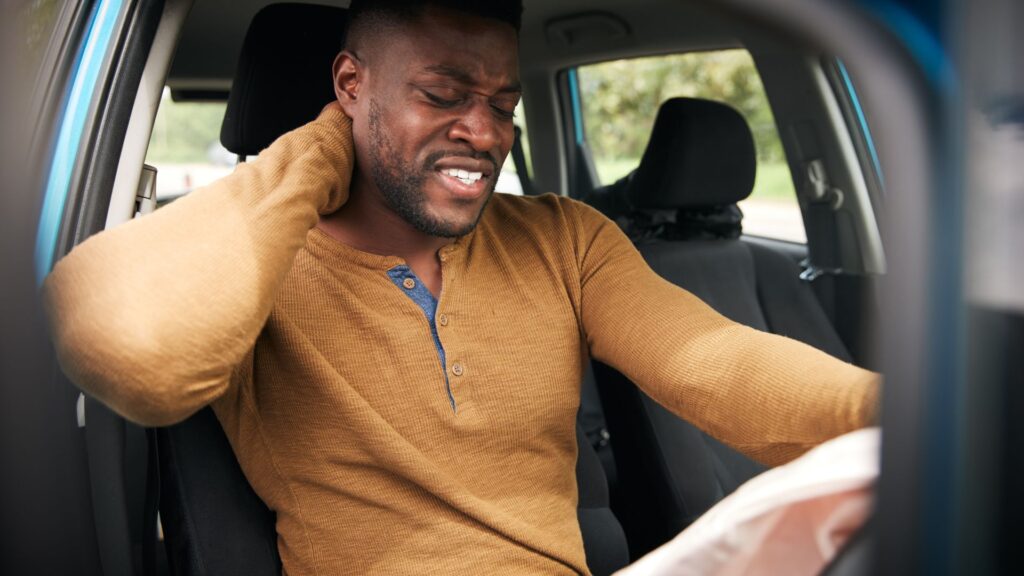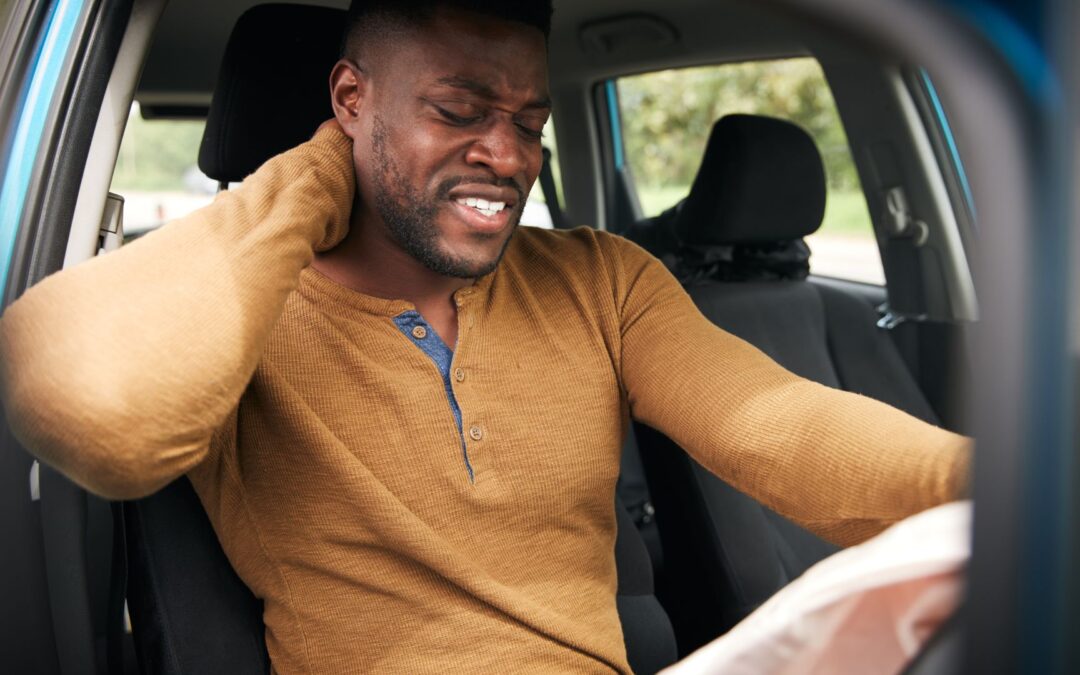Before you start your commute, review My First Visit guidelines. Long hours behind the wheel can lead to low back stiffness, neck tension, and poor posture. Proper seat and mirror adjustments, along with spinal-friendly habits, can make every drive more comfortable.

Understanding the Spine During Driving
The lumbar and thoracic regions of the spine are most affected while driving. Key considerations:
- Lumbar spine – supports your upper body and absorbs shock from bumps
- Thoracic spine – maintains upper body posture
- Cervical spine – controls head position, especially for mirrors and blind spots
- Core and glute muscles – stabilize the pelvis and lower back
Poor posture, slouched seating, or reaching for controls increases stress on these areas and can cause pain over time.
Common Causes of Driving-Related Back Pain
- Slouching or leaning forward for extended periods
- Seat too far from pedals or steering wheel
- Improper lumbar support
- Repetitive twisting to check mirrors or blind spots
- Extended static sitting without micro-movements
Spine-Smart Seat Adjustments
1. Seat Height and Distance
- Adjust seat so hips and knees are at ~90°
- Keep feet flat on pedals without stretching
- Ensure thighs are fully supported without pressure behind the knees
2. Lumbar Support
- Use built-in lumbar support or a small cushion
- Maintain natural inward curve of lower back
- Prevents slouching and reduces lumbar strain
3. Seat Back Angle
- Slightly reclined (~100–110°) reduces spinal load
- Keep shoulders relaxed and in contact with the seat back
4. Mirror Placement
- Adjust mirrors to minimize neck and torso rotation
- Central rearview mirror should align with eyes
- Side mirrors angled to reduce head turning while maintaining view
Stretching and Micro-Movements
Even short breaks help reduce tension:
- Seated spinal rotations – gently twist torso side to side
- Neck stretches – tilt ear to shoulder, hold 10 seconds each side
- Shoulder rolls – forward and backward to release tension
- Hip flexor stretches – stand and stretch after long drives

Integrating Chiropractic Care
Chiropractors can assist by:
- Evaluating spinal alignment for optimal seating posture
- Reducing tension in lumbar, thoracic, and cervical regions
- Recommending personalized stretches and ergonomic driving tips
- Enhancing spinal mobility for longer, comfortable drives
Combining driving posture awareness with chiropractic guidance promotes a healthier spine and reduces chronic pain risk.
Final Thoughts
Driving doesn’t have to strain your back. With proper seat adjustments, mirror placement, posture awareness, and regular stretching, you can enjoy pain-free journeys.
Take the next step toward a healthy spine — schedule your visit through Contact or Visit.
